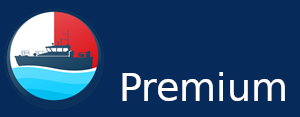A pilot was seriously injured after losing balance when a large wave impacted the vessel at the same time as they stood up to remove their lifejacket while in the cabin.
What happened
At 0055, after retrieving the pilot and other personnel from a tanker, the class 2 domestic commercial vessel commenced its voyage back to the marina. Shortly afterwards, at approximately 0100, as the vessel was leaving the lee of the tanker it was hit by a large wave. The Master did not see it coming due to the low light conditions at night.
Just as the wave impacted hard with the vessel, the pilot had stood temporarily to remove their lifejacket. At the time of the incident the wind was 23-28 knots with a 1.5 metre swell. This resulted in the pilot losing their footing and falling, becoming injured. First aid was applied on board whilst the vessel proceeded to the marina at slow speed. On arrival at 0400 the pilot was assisted by ambulance medics and transported to hospital.
Investigation findings
The investigation identified the following as contributory factors:
As the vessel cleared the lee from the larger vessel where the sea state was calm, it encountered a large wave which caused a sudden, large pitching movement.
Restricted visibility during night-time prevented the Master from being able to see the large wave approaching the vessel and reduce speed before impact.
The unprepared pilot, who had momentarily stood up to remove their lifejacket, was not adequately secured with at least 3 points of contact to prevent them from losing their balance following sudden movement of the vessel. The weather conditions contributed to the incident.
Although, the Master planned for the weather conditions and sea state, at the time of the incident the vessel was not protected by the lee of the larger vessel.
Safety message
Where sea state and weather present hazardous conditions, passengers need to be advised to maintain three points of solid contact with the vessel whenever possible.
When operating in inclement weather, consider the placement of passengers and other weights.
Following this incident, the company amended its procedures to instruct the Master to hold position in the lee of the larger vessel until a verbal confirmation is given to all passengers and crew that they are ready for the voyage.


